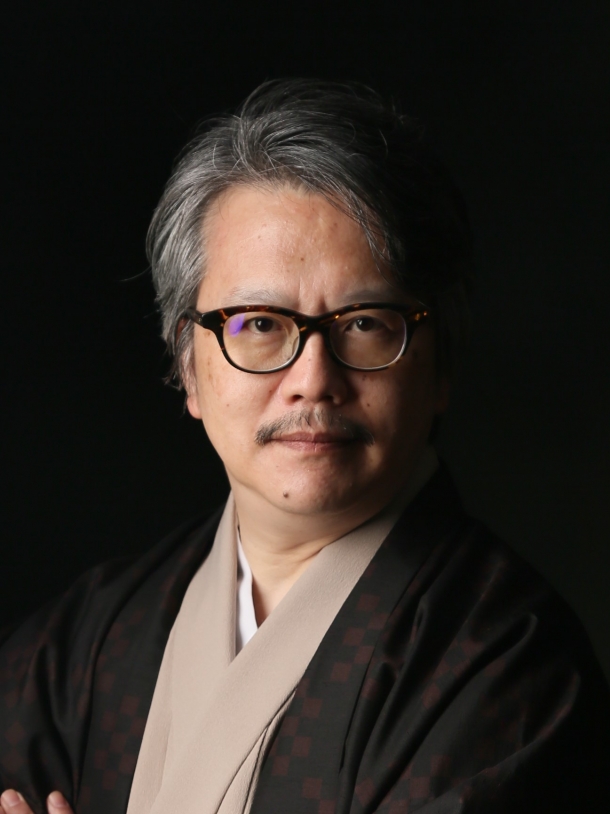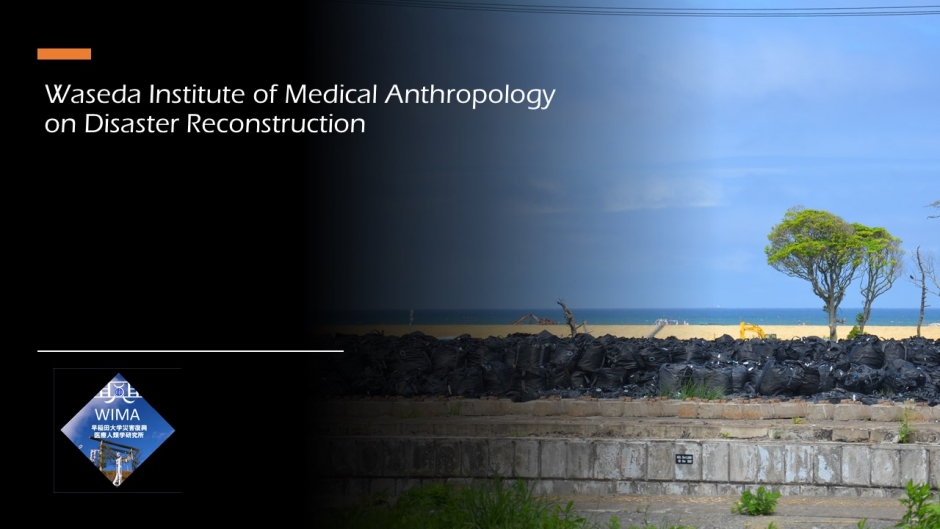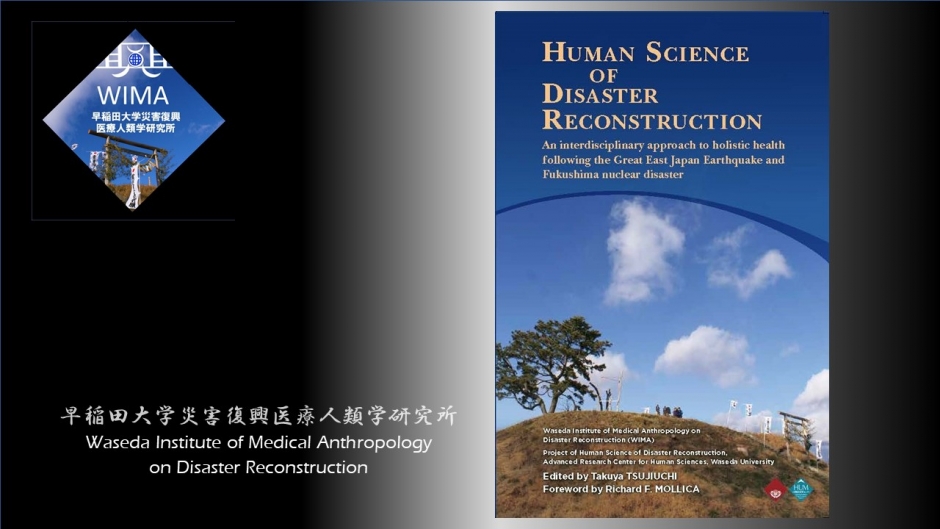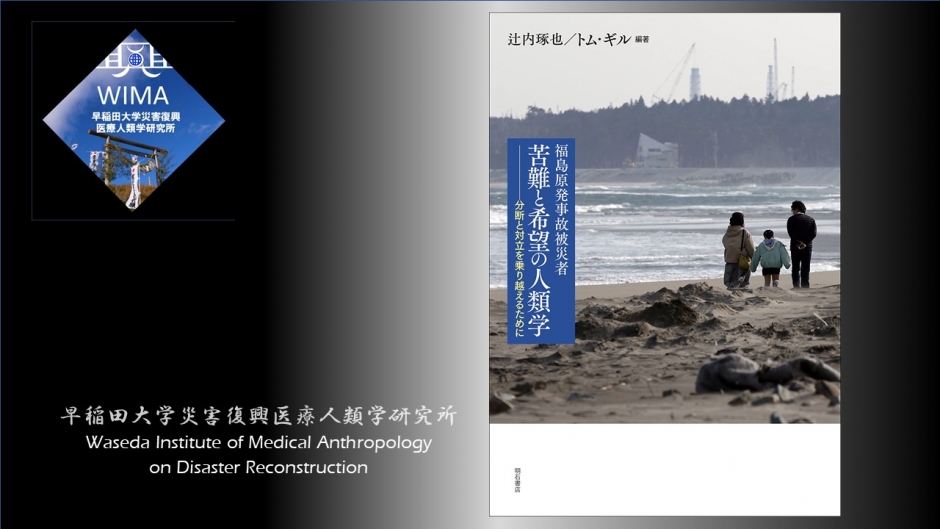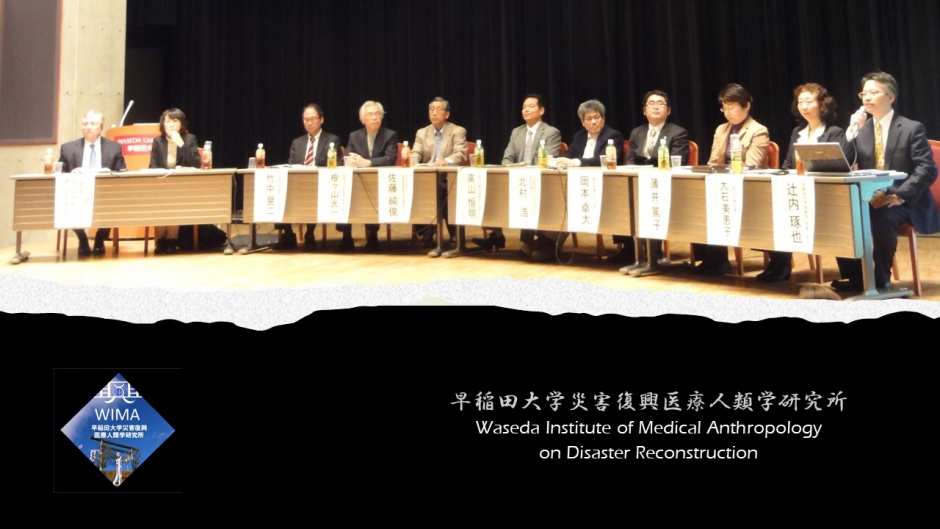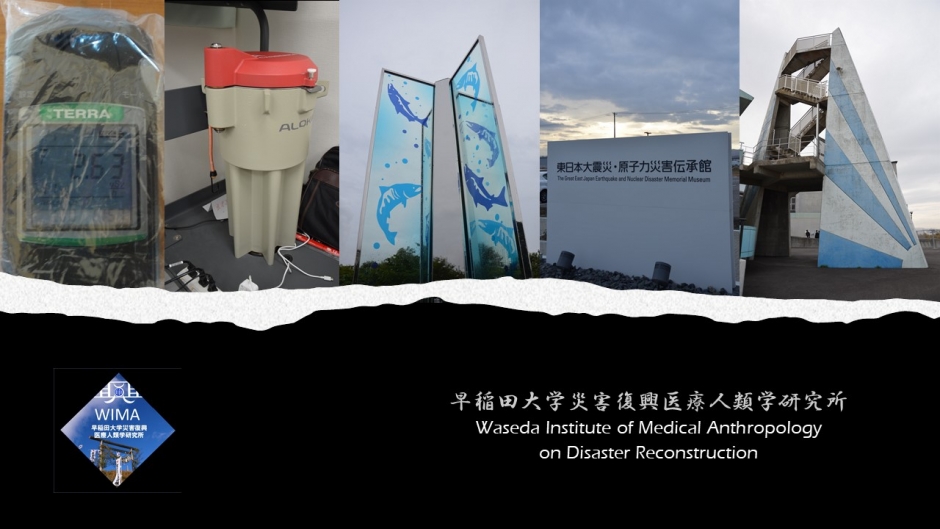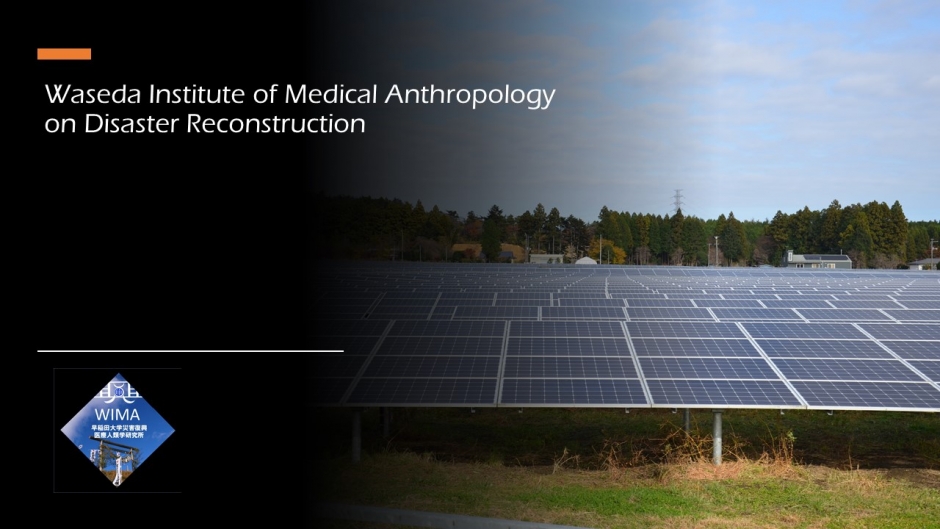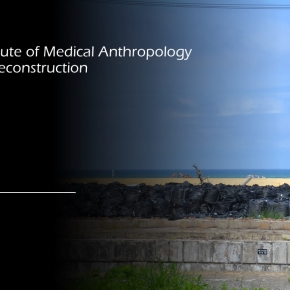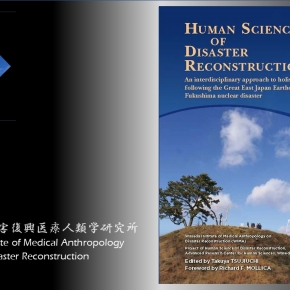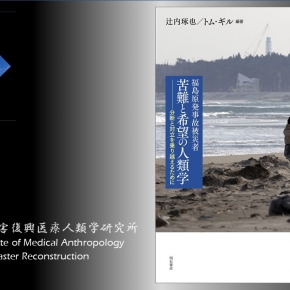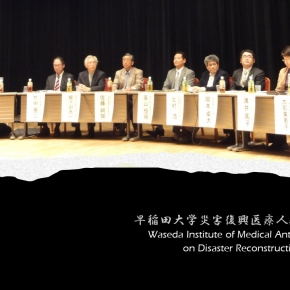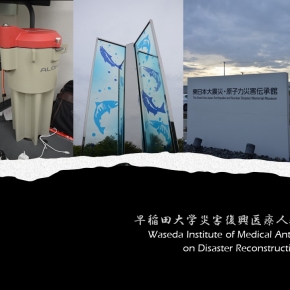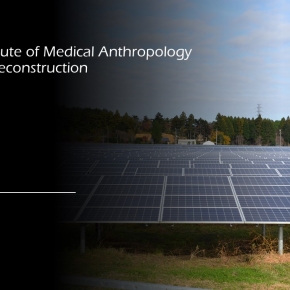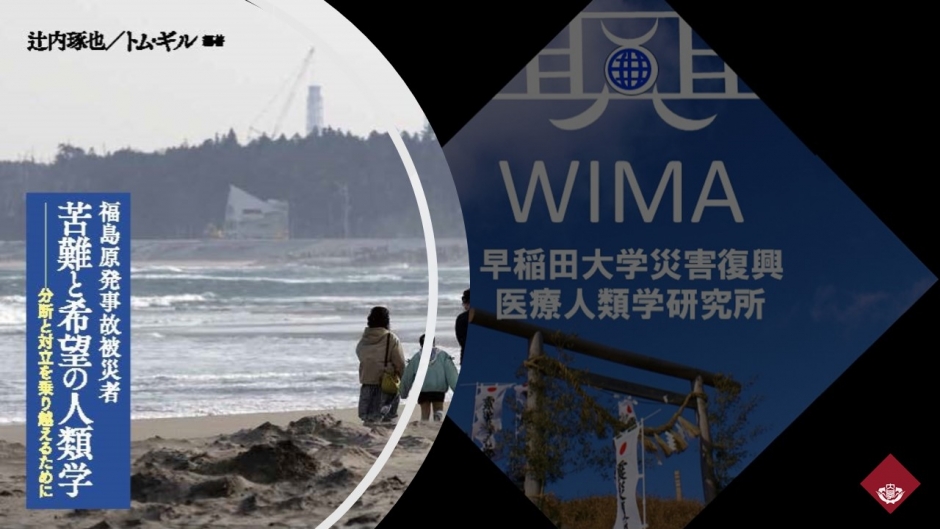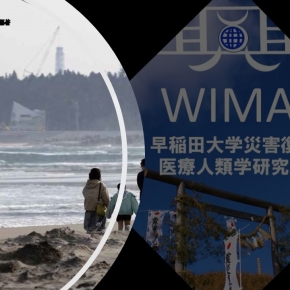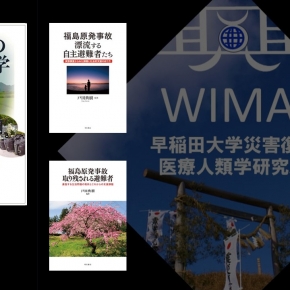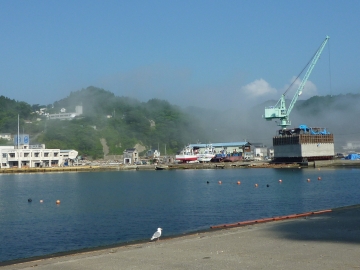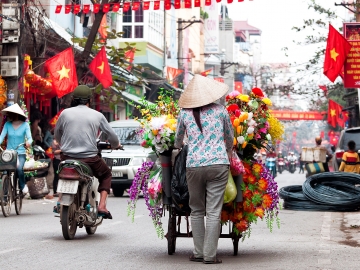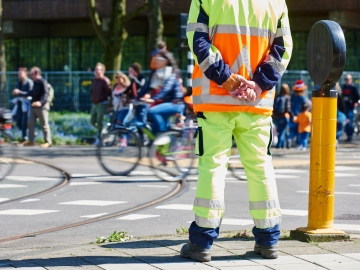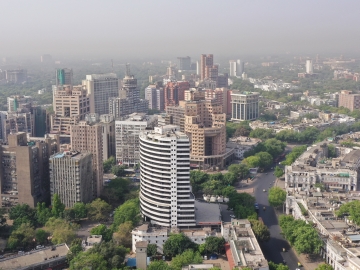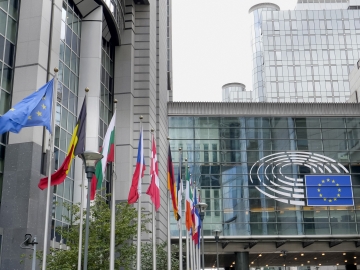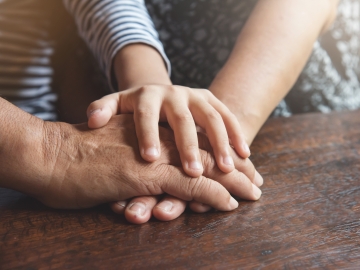■Research Purpose:
The impact of the Great East Japan Earthquake (GEJE) arose severe worldwide complex issues surrounding our contemporary world. The mission of our research institute is to evaluate medical, mental health, socio-economic, and cultural issues after natural and man-made disaster around pan pacific area, and also create solutions on disaster reconstruction with the scientific methods of applied medical anthropology. We will present these achieved knowledge and opinions not only to Japanese government but alsoto the worldwide academic and political fields.
■Background of the establishment:
This institute is established by the idea of Professor emeritus Yasushi Kikuchi who conducted the former project research institute that called “Institute of Medical Anthropology (2007-2011)” at Waseda comprehensive research organization. The former institute focused on the issues of immigrant workers from South-America, and this institute will focus on disaster reconstruction. This institute will become the core organization of “The Project of Disaster and Human Sciences” which has been continued researching after GEJE by volunteer professors at Faculty of Human Sciences, Waseda University. In addition, it is important that we will collaborate with Harvard Program in Refugee Trauma (HPRT) in the U.S. which has made world leadership in the health and mental health care of survivors of mass violence, trauma, and disasters for the past thirty years, and we can create the solutions on disaster reconstruction from world wide view.
※Applied medical anthropology
Applied medical anthropology aims to evaluate whole inter relationships between human beings and environment, and clarify the full picture of human existence and well-being.
■Research Overview:
“The project of Disaster and Human Sciences” have performed several large survey cooperated with Shinsai Shien Network Saitama (SSN) and NHK Fukushima broadcasting office on the victims of GEJE who are living in Saitama, Tokyo, and Fukushima prefecture. We conducted these survey and research by the holistic scientific methods within Medical Anthropology, Behavioral Science, Clinical Psychology,Social Welfare, Developmental Human Ethology, Architect Environmental Psychology,and Public Health. These survey evaluate whole life issues of the victims which include disaster stricken situation, socio-economic situation, physical and psychological statement, social capital, housing and environmental situation, and compensation issues.The outcome of our research was presented as NHK documentary movie “Fukushima:Two Years Later” (March, 2013), a lot of newspaper articles, the book “GAJUMARU:Banyan Tree as Support model” (Waseda Inc.), articles in the Journal “SEKAI”, speech at the Cabinet Committee and the National Assembly, and written opinion to the prefectural and municipal governments.
Many of our research staff had experiences of supporting and researching after Great Hanshin Kobe Earthquake in 1995. After GEJE we continued to conduct support and field work research at disaster area mainly at Fukushima, and also at Saitama, Tokyo as evacuating area. We invited as adjunct researchers the representatives of private support groups in order to create problem-solving method for the victims mainly,additionally several professionals at the subjects of development anthropology,architectural anthropology, cultural anthropology and medical doctor who are performing field research and support victims. Harvard Program in Refugee Trauma (HPRT) is the key partner to establish the knowledge of solution on disaster reconstruction from worldwide view around pan pacific area.
■Research fields of our institute:
1. Physical and psychological health issues (disaster related death, trauma,radiation exposure, etc.)
2. Human and social network and health issues (health information, social capital,etc.)
3. Social welfare of the provincial reconstruction issues (human relationship,recovery of community network, etc.)
4. Family and children issues (raising children, education, restructuring of family relationships, etc.)
5. Architectural issues over the surrounding environment and housing (temporary housing, disaster public housing, awareness of disaster prevention, etc.)
6. Reconstruction and inheritance issues of the local culture and environment (destruction of the environment and culture, etc.)
7. Legal issues related to compensation and compensation (Legal development for life reconstruction, etc.)
8. Support strategies by private organizations (comprehensive support of medical,psychological, welfare, education and the legal field, etc.)
■The need for continued research:
Twelve years after the Great East Japan Earthquake of 2011 and the nuclear power plant accident, which were the main focus of the Institute’s work, the number of evacuees living in shelters across Japan is reported to be approximately 30,000 (Reconstruction Agency, 9 June 2023).
In 2022, the UN Human Rights Council Special Rapporteur, Cecilia Jimenez-Damary visited Japan to investigate the current situation. She recommended that, as IDPs(Internal Displaced Persons), their human rights should be secured in accordance with the Guiding Principles on Internally Displaced Persons. Furthermore, the decommissioning of the melted-down nuclear power plant is being carried out on a trial-and-error basis as the world’s first project, and the problems of the disposal of radioactive waste such as contaminated soil brought to an interim storage facility in Fukushima Prefecture, contaminated water/treated water stored on the premises of nuclear facilities,as well as the problem that a final disposal site has not been built anywhere in Japan.The nuclear disaster, which has caused the largest number of internally displaced people in Japan since the end of World War II, has created an endless number of ongoing challenges for which no solutions can be found.
On the other hand, the Basic Policy for Reconstruction and Revitalisation of Fukushima, presented by the Reconstruction Agency in 2022, states that “the lifting of the evacuation order is the first step in reconstruction” and establishes specific reconstruction and revitalisation zones in difficult-to-return areas with high radiation levels as areas where residents are expected to return and settle, and invests several hundred million yen to intensively decontaminate and carry out industrial reconstruction and revitalisation. The government has also started the construction of public facilities.Furthermore, a national project is underway to promote the fields of robotics, agriculture,forestry and fisheries, hydrogen energy, radiation medicine, drug discovery medicineand industrial applications of radiation. This kind of ‘reconstruction without human beings’is progressing, and as pointed out by the UN Human Rights Council Special Rapporteur,a major problem remains that consideration for human rights, welfare and the environment has been neglected.
The fire and oil leakage problems at the Shiga Nuclear Power Plant caused by the Noto Peninsula earthquake on 1 January 2024 reminded the public that the problems caused by the Great East Japan Earthquake and the Fukushima nuclear accident are still ongoing, as well as the possibility of accidents and damage from possible Nankai trough earthquake and Tohoku offshore earthquakes in the next 30 years.Despite experiencing a number of large-scale disasters, including nuclear accidents, legislation has not been developed to resolve various issues. It will also be necessary to systematise the damage and recovery process of the Great East Japan Earthquake and the nuclear accident from the perspective of disaster prevention and disaster mitigation.
Based on the concept of ‘holistic suffering, holistic medicine and holistic care’ in the field of psychosomatic medicine and palliative medicine, in which the principal investigator has been engaged, the institute aims to present a ‘holistic recovery’ model that encompasses body-mind-society-culture-ecology, which takes into account human daily life and lifetime as a total existence.
The ultimate goal is to make policy recommendations to local authorities and governments in order to promote steady recovery from large-scale disasters.
